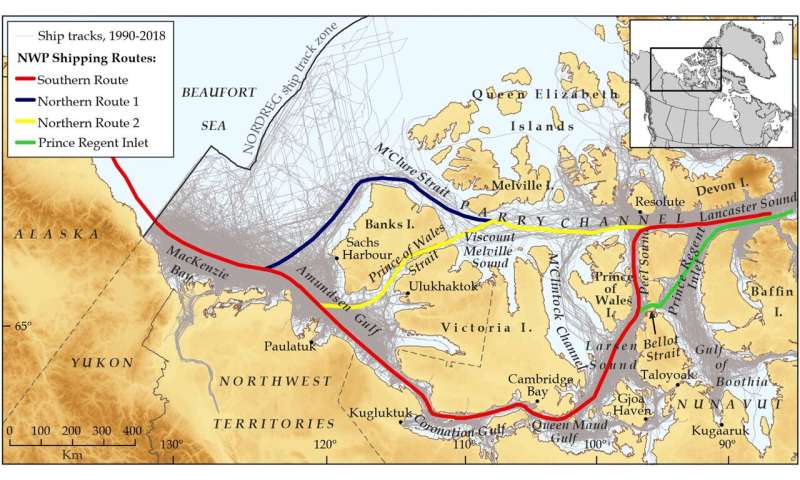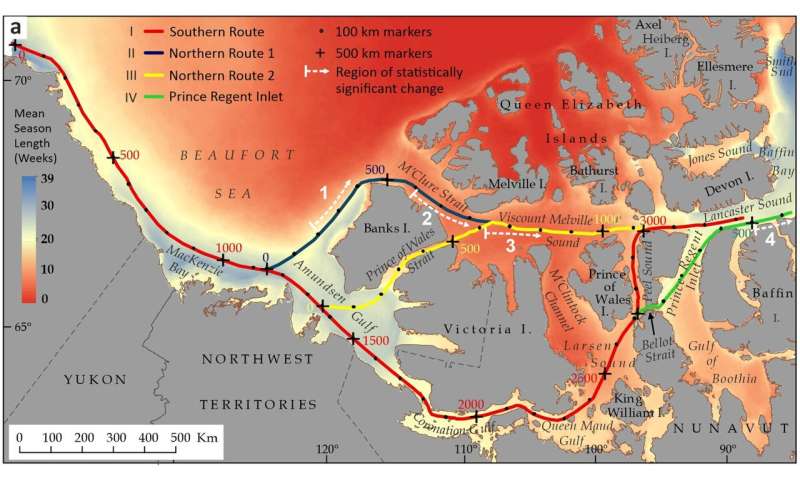An increased amount of thick sea ice flowing south from the Arctic Ocean shortened the ice-free shipping season in several parts of the Northwest Passage between 2007 and 2021, according to an analysis in Communications Earth & Environment.
The authors suggest this could mean the Northwest Passage is unlikely to become a viable alternative to traditional shipping routes, despite previous hopes that it may become viable due to global warming.
The Northwest Passage (NWP) is a commercial shipping route connecting the Atlantic and Pacific Oceans that runs through the Arctic Circle north of North America. Through the Canadian Arctic Archipelago (CAA), it splits into a southern route and a shorter, preferred northern route. The length of the shipping season—the period during which the route is navigable for certain ships—for the entire NWP has been changing due to global warming.
Alison Cook and colleagues used sea ice charts from the Canadian Ice Service to calculate the number of weeks per year that each 10-kilometer section of the routes through the CAA was navigable by a PC 7 class ship (capable of safely traveling through ice up to 70cm thick) between 2007 and 2021.
The authors found that the shipping season during this period had significantly shortened in three sections of the northern route—the eastern edge of the Beaufort Sea (a 14-week decrease), and the M’Clure Strait and Viscount Melville Sound (both five-week decreases).
They also found that the M’Clure Strait (as well as the Larsen, Peel, and Viscount Melville Sounds) acted as choke points in the NWP as they experienced between 10 and 25 fewer navigable weeks than other sections.

Map showing the routes the Northwest Passage takes through the Canadian Arctic Archipelago. © Alison Cook

Map showing the mean shipping season length across the Northwest Passage’s routes through the Canadian Arctic Archipelago. © Alison Cook
The authors say that both the choke points and the decreased shipping season length in some areas are the result of an increase in older, thicker ice flowing south from the Arctic Ocean, due to increased melting under climate change of the oldest Arctic sea ice (in the Last Ice Area).
This type of ice poses a greater risk to ships than the younger, thinner ice that was previously most common in the CAA. The authors note that their findings could also be problematic for coastal communities in the CAA, as they rely on shipping for food and goods.
More information:
Alison Cook, Sea ice choke points reduce the length of the shipping season in the Northwest Passage, Communications Earth & Environment (2024). DOI: 10.1038/s43247-024-01477-6. www.nature.com/articles/s43247-024-01477-6
Citation:
Thick sea ice flowing from Arctic Ocean shortening shipping season in Northwest Passage, analysis finds (2024, July 11)



